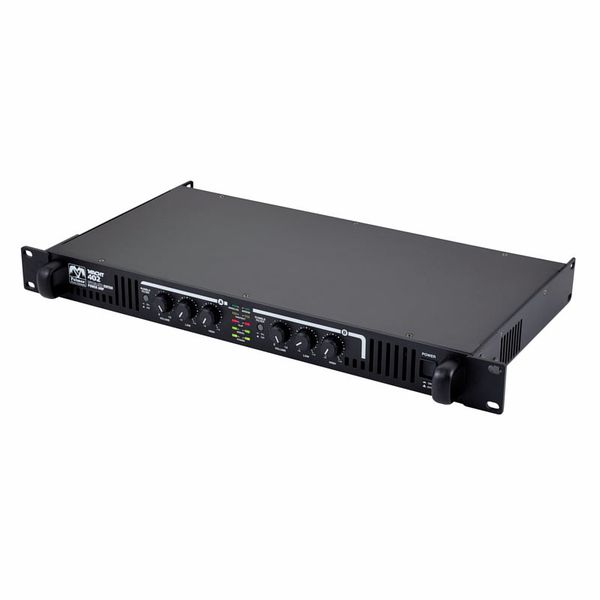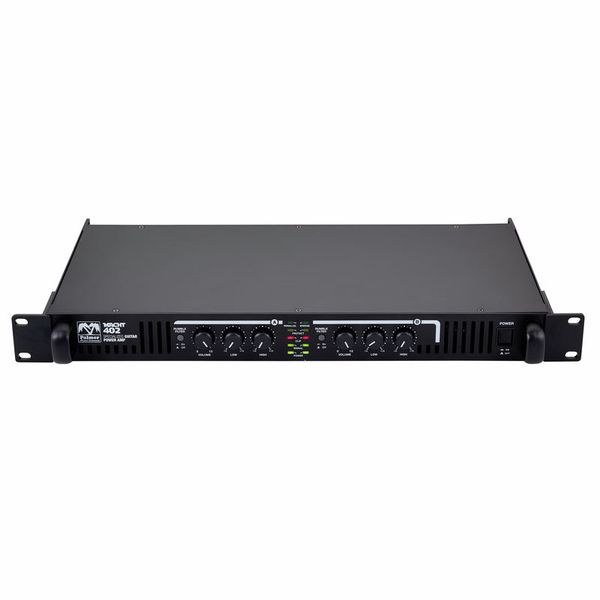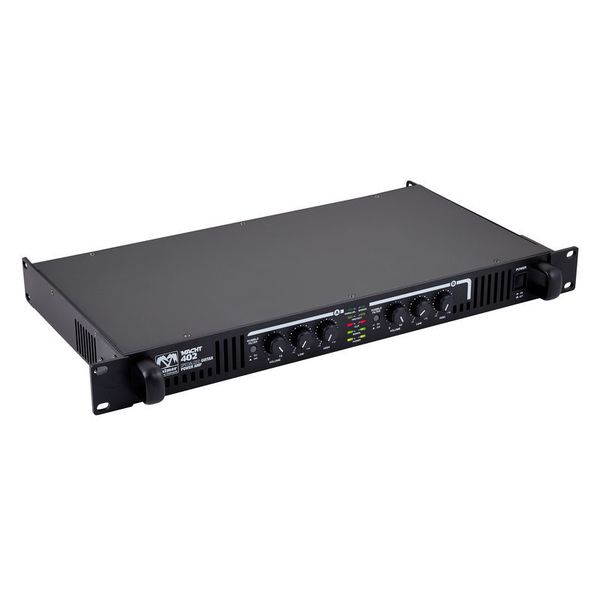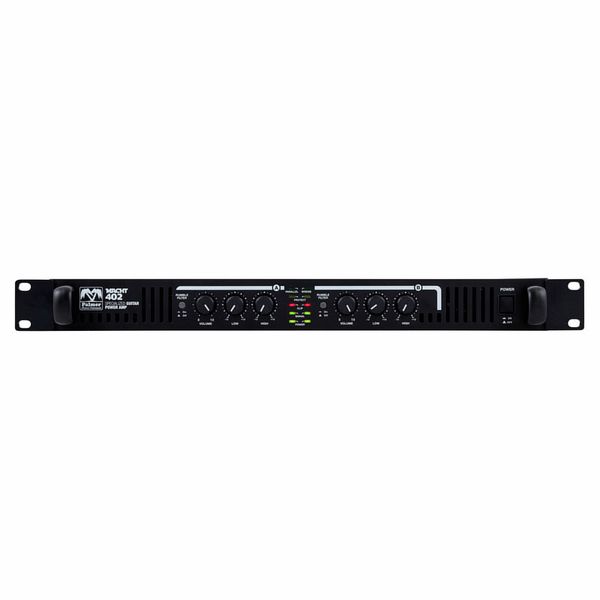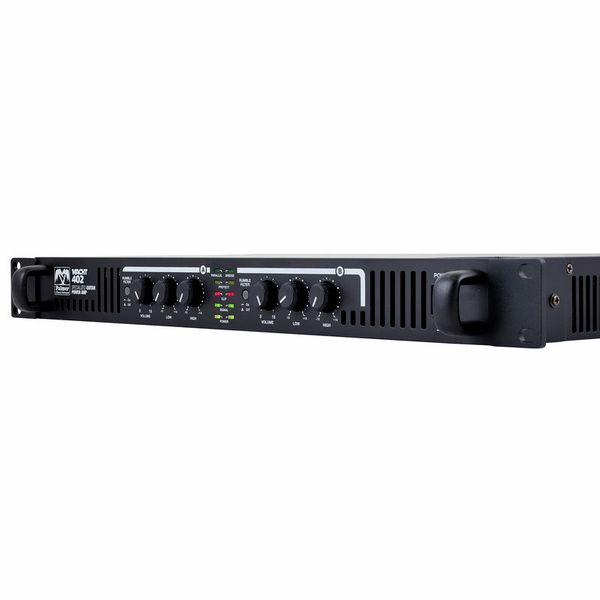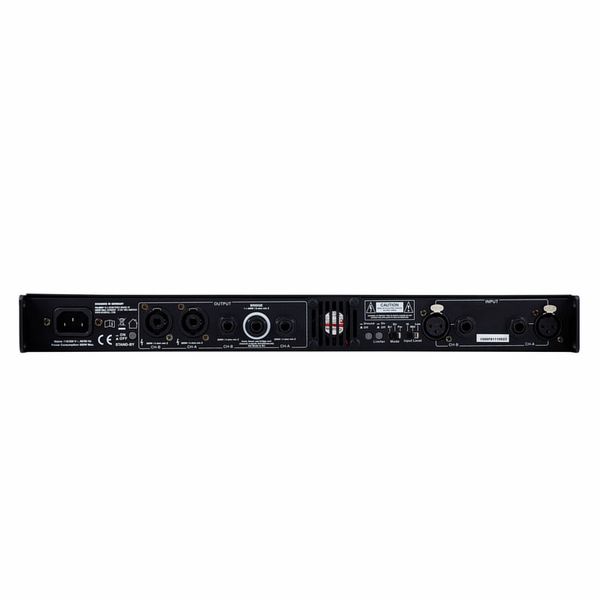I've been using this amp for a few days now and I'm very impressed with it. I had looked at purchasing the Harley Benton GPA-400 but decide on this one as it has a lot more features included and seems to be of a better quality. Palmer is part of the Adam Hall group. Compared to the Harley Benton GPA-400, it has more output options for a start: 2 x Speakon and 3 x 6.3mm (1/4") jacks. Inputs: 2 x balanced 1/4" TRS and 2 x balanced XLR line inputs for channels A and B. It also has very good built-in circuit protection: over-voltage; overheating; short-circuit; soft-start and DC. Switching power supply. Operating voltage is switchable: 230v or 115v, AC. Always check the voltage setting before turning a device on for the first time. I once had a power supply blow-up because the voltage switch was supplied with the switch in the wrong position: 110v instead of 240v. I didn't check before switching it on - bang! An expensive mistake, one very dead power supply. It has more output power modes than the Harley Benton GPA-400, as well: 2 x 200w@4ohms; 2 x 100w@8ohms; 2 x 50w@16ohms. In bridge mode: 1 x 400w@8ohms; 1 x 200w@16ohms (mono).
FRONT CONTROLS:
On/off; volume; treble and bass controls (sometimes call resonance and presence). Rumble filters: low frequency lock at 40Hz for channels A and B which are independent of each other.
FRONT LEDS:
Power, signal, clip, protect, Output Mode: bridge/parallel).
REAR CONTROLS:
Ground lift: eliminate ground loop hum. Clip limiter: output set to maximum possible level. Output mode: bridge, stereo or parallel. Adjustable input sensitivity: Hi (-10 dbu/240 mv); Mid (-2 dbu/610 mv) and Low (+4 dbu/1.23 v).
CLASS-D AMPLIFIER
This is a class-D amplifier, and therefore, is very efficient. The theoretical power efficiency of a class-D amplifier is 100%! But, real-world power MOSFETs are not ideal switches, but practical efficiencies well over 90% are common. If you don't know the difference, by contrast, linear AB-class amplifiers are always operated with both current flowing through and voltage standing across the power devices. An ideal class-B amplifier has a theoretical maximum efficiency of 78%. Class A amplifiers (purely linear, with the devices always "on") have a theoretical maximum efficiency of 50% and some versions have efficiencies below 20%. The power consumption of this amp at full power is 820 watts. It also weighs in at 3.8kg which is very good.
I have connected my rack version of the brilliant Kemper Profiler Amplifier (KPA) to the Palmer Macht 402. The amp then powers two Line 6 DT25, 1x12 extension cabinets. The cabs are designed by Reinhold Bogner and use 12" custom Celestion G12H-90, 8 ohm speakers. They sound great and have lots of bass because of the close-back design. It's my dream set-up at the moment, until something else comes out ;-) It's loud and it's got more than enough oomph, 200 watts to be precise! And, it all comes in full glorious stereo, so modulation and delay effects sound fantastic.
CONCLUSION
Overall, I'm very happy with this amp and for the price it a bargain. It looks and feels like a quality unit, it's got no valves so I hope it's (very) reliable, I can't tell yet as I haven't had it that long, but it comes with a 3-year Thomann guarantee, highly recommended.



